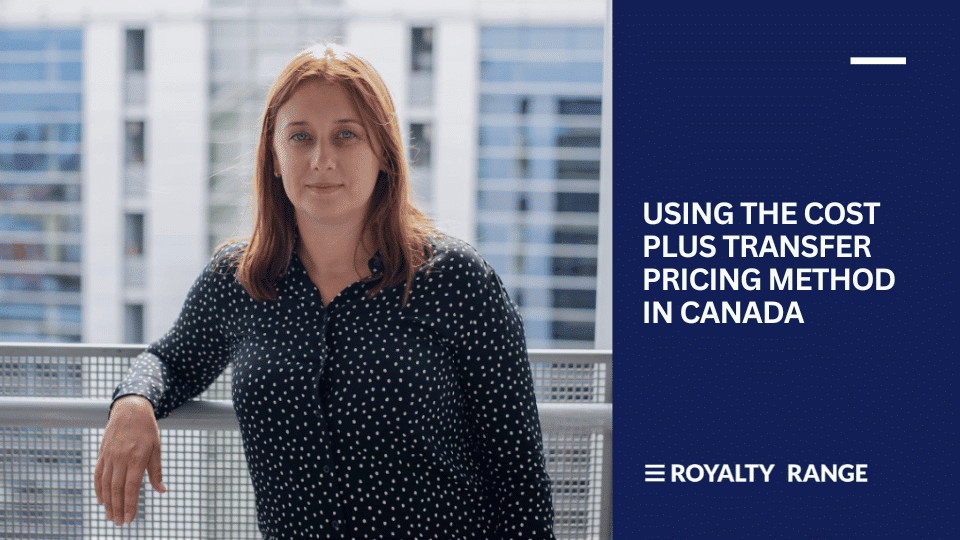Using the Cost Plus transfer pricing method in Canada

Asta Rudzikiene |
November 15, 2023

The Cost Plus method is one of the main methods that transfer pricing professionals use, but what should you bear in mind when considering using this method in Canada?
Canada’s rules for transfer pricing are closely aligned with the Organisation for Economic Co-operation and Development’s (OECD) Transfer Pricing Guidelines for Multinational Enterprises and Tax Administrations, and its statutes require the application of arm’s length principles. Here you can see the relevant legislation and guidance that determine the rules.
In this article, we’ll focus on the Cost Plus method, one of the five OECD-recommended transfer pricing methods – we’ll cover what it is, when to use it, and how to use it in Canada.
What is the Cost Plus method?
A transfer pricing approach used to determine an arm’s length price for transactions between related entities, the Cost Plus method takes the costs incurred by a supplier providing a product or service to a non-arm’s length enterprise and adds a gross markup, which represents the profit that would be expected in an arm’s length transaction. The markup is determined by comparing it to similar transactions either within the group (internal comparables) or with arm’s length entities (external comparables).
When should you use the Cost Plus method in Canada?
The Canada Revenue Agency (CRA) generally follows the OECD guidelines for transfer pricing and accepts the recommended five main methods:
- Traditional transaction methods:
- Comparable uncontrolled price (CUP) method
- Resale price method
- Cost plus method
- Transactional profit methods:
- Profit split method
- Transaction net margin method
However, it has published its view that “there is a natural hierarchy in the methods”. It says: ”Certain methods provide more reliable results than others, depending on the degree of comparability between controlled and uncontrolled transactions.”
So, when should you use the Cost Plus method?
Crossborder transactions
For international transactions involving taxpaying entities in Canada, the CRA prefers traditional transaction methods (CUP, Resale Price, Cost Plus) over transactional profit methods – as outlined in TPM 14 – 2010 Update of the OECD Transfer Pricing Guidelines.
For the CRA, the choice of method must come down to “the degree of comparability available under each of the methods and the availability and reliability of the data.”
In the Information Circular IC87-2R, which was cancelled in 2019, the CRA provided more explicit guidance on the selection of transfer pricing method:
“The CUP method, if applicable, clearly provides the highest degree of comparability for the traditional transaction methods because it:
- focuses directly on the price of a transaction; and
- requires both functional and product comparability.
- Although the CUP method provides the most direct and reliable means of establishing an arm’s length price, other traditional transaction methods may have to be used where:
- there is not enough quality information available with respect to uncontrolled transactions; or
- it is not possible to reliably quantify the differences between controlled and uncontrolled transactions.
- At some point, differences become so significant that the CUP method will no longer produce the most reliable measure of an arm’s length price.”
In these circumstances, where the CUP method becomes unreliable, the resale price method or the cost plus method would provide the next best alternative, with the choice depending on “the comparability of quality data available for each of the parties to the transaction. Quality comparable information is generally more readily available for the least complex party.”
Domestic (intra-Canada) transactions
For transactions within Canada, the CRA provides limited guidance, and Grant Thornton says: “Taxpayers are advised to refer to jurisprudence. Domestic transactions are not subject to the rules of Section 247 of the ITA and other tax provisions exist that address remuneration for transactions between non-arm’s length persons and expense reasonability.”
Advance pricing arrangements
The CRA provides an Advance Pricing Arrangement (APA) program. While not a legal requirement, the program can help taxpayers avoid uncertainty and select the appropriate transfer pricing methods in advance for transactions with non-resident persons of Canada.
How do you use the Cost Plus method in Canada?
To use the Cost Plus method in Canada, the CRA states that you must take the costs incurred by the supplier of the product/service provided to a non-arm’s length enterprise and add on a comparable gross markup. This comparable gross markup can be determined in two ways:
- Internal comparable: the Cost Plus markup earned by a member of the group in comparable uncontrolled transactions
- External comparable: the Cost Plus markup earned by an arm’s length enterprise in comparable uncontrolled transactions
Whatever the case, the returns used to determine the markup must be earned by entities performing similar functions or selling similar goods. The more comparable the functions, risks, and assets, the more likely it is that the Cost Plus method will produce an appropriate estimate of an arm’s length result.
Properly determining cost under the Cost Plus method is important. In general, these costs are divided into three categories:
- Direct costs such as raw materials
- Indirect costs such as repair and maintenance which may be allocated among several products
- Operating expenses such as selling, general, and administrative expenses
Cost is usually calculated in accordance with accounting principles for that particular industry in the country where the goods are produced. However, most important is that the cost base of the transaction of the party to which a markup is to be applied is calculated in the same manner as the cost base of the comparable transactions. Where cost isn’t determined in the same manner, both the markup (which is a percentage of cost) and the transfer price (which is the total of the cost and the markup) will be incorrect.
When applying the Cost Plus method, you must also carefully consider the relative efficiencies of the parties being compared. This includes a consideration of the differences in:
- Cost structures (such as the age of the plant and equipment)
- Business experience (such as startup versus mature businesses)
- Management efficiency
The more complex the functions performed, the assets used, and the risks assumed, the more difficult it is to find comparable data to apply the Cost Plus method. Therefore, it generally produces the most reliable results when:
- The functions performed by the party are relatively straightforward
- The party doesn’t contribute valuable or unique intangible assets
For a detailed example of how to apply the Cost Plus method, please see the CRA’s guidance here.
For more guidance on choosing transfer pricing methods, please see our guide.
For more information on reporting and documentation requirements for transfer pricing in Canada, please see our article here.
Premium-quality data for transfer pricing professionals in Canada
“The determination of transfer pricing method and accuracy in results depends, above all else, on access to high-quality comparable data, which is exactly what our databases are there to provide,” says Kris Rudzika, Managing Partner at RoyaltyRange.
Multinational enterprises, global consulting companies, international law firms and tax authorities in more than 70 countries rely on RoyaltyRange databases.
We offer four professional databases, covering private company financials and ownership information, royalty rates, loan interest rates and service fees – providing everything you need for transfer pricing, financial transaction benchmarking, royalty rates and service fees benchmarking, valuation of intangibles and purchase price allocations, sales and marketing lead generation and automation, procurement and client onboarding, and KYC/AML procedures.
Find out more about our databases and tools here or read more about transfer pricing in Canada.
Sources
CRA:
OECD:
https://www.oecd.org/tax/transfer-pricing/transfer-pricing-country-profile-canada.pdf
Grant Thornton:
The information provided below is for general informational purposes only and should not be construed as legal or tax advice. It is not a substitute for consulting with a qualified legal or tax professional.




